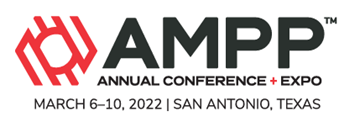Search
AMPP Conference Papers
View as
Sort by
Display
per page
An Overview of Significant Updates to High Voltage Holiday Detection Standards (NACE SP0188/SP0274/SP0490, ASTM D5612/G62, ISO 29601)
Product Number:
51324-21164-SG
Publication Date:
2024
$40.00
Analysis and Monitoring of Welded Carbon Steel Corrosion in Aqueous Solutions Using Electrochemical Noise and Wavelet Analysis
Product Number:
51324-21243-SG
Publication Date:
2024
$40.00
Analysis of Internal Corrosion Monitoring Data in Relation to ILI Results
Product Number:
51323-19433-SG
Publication Date:
2023
$20.00
Analysis of leak repair testing requirements in ASME PCC-2 and ISO 24817
Product Number:
51323-18934-SG
Publication Date:
2023
$20.00
Analysis of Pitting Susceptibility of Low Carbon Steels for the Refinement of Salt Dissolution Inhibitor Requirements
Product Number:
51323-19293-SG
Publication Date:
2023
$20.00
Analytical Method to Detect and Remediate Zinc Contamination of Austenitic Stainless Steels to avoid Liquid Metal Embrittlement
Product Number:
51323-18999-SG
Publication Date:
2023
$20.00
Analytical Testing Equipment for Use with Industrial Coatings
Product Number:
51323-19409-SG
Publication Date:
2023
$20.00
Anticorrosion Performance Of Smart Release Bionanocomposite Coatings On Aluminium Alloy 6061
Product Number:
51322-18189-SG
Publication Date:
2022
$20.00
Applicability of Martensite-Based Stainless Steels for CO2 Injection Tubing
Product Number:
51324-20636-SG
Publication Date:
2024
$40.00
Applicability Study of Inhibitors to Corrosion Under Insulation
Product Number:
51323-19244-SG
Publication Date:
2023
$20.00
Application of a Highly Corrosion-Resistant Nickel-Alloy in the Chemical Industry
Product Number:
51323-19183-SG
Publication Date:
2023
$20.00
Application of Artificial Intelligence in Corrosion Management
Product Number:
51324-20711-SG
Publication Date:
2024
$40.00












